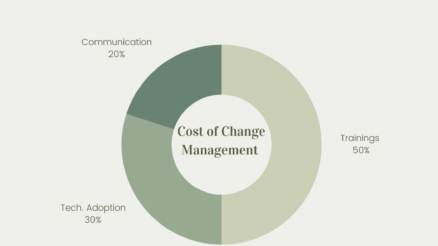Whether you’re thrilled by the chance to shape the future of your team or a tad overwhelmed by the weight of expectations resting on your shoulders, there’s no denying that the first 90 days are crucial for you in your new role of a director.
It’s during this time that you lay the foundation for your leadership, establish your vision, and start to weave your thread into the company’s fabric.
But how do you ensure that you hit the ground running without missing a beat?
Here is 30-60-90 day plan for new director that is your roadmap to early success in a leadership role.
So, grab your favorite brew, get comfy, and let’s dive into how you can craft a plan that not only outlines your first steps but also propels you forward with momentum that’s hard to ignore.
What is 30 60 90 day plan?
A 30-60-90 day plan is a strategic framework that outlines the goals, priorities, and actions a person intends to take in the first 90 days of a new role, project, or goal-setting period.
This plan is divided into three distinct phases, each lasting 30 days, and is particularly popular among new leaders, managers, and employees aiming to make a significant impact in a new position or role.
The initial 30 days are designated as the learning phase, during which individuals are expected to gain a comprehensive understanding of the current work status.
Subsequently, the following 30 days transition into an integration phase, where individuals should pinpoint areas suitable for implementation. Finally, in the last 30 days, the primary focus shifts towards full-scale strategy implementation.
30 60 90 Day Plan for a New Director
A 30-60-90 day plan for a new director outlines a strategic approach to taking on their new role, divided into three key phases.
The first 30 days, the learning phase, involve understanding the current situation and assimilating into the company culture.
The next 30 days, or the integration phase, focus on identifying opportunities for impact and beginning small-scale initiatives.
The final 30 days emphasize the full-scale implementation of strategies, moving from planning to active execution to achieve set objectives.
The First 30 Days of Learning for New Director
The first 30 days of stepping into a director role can be less about making immediate waves and more about understanding the depth of the water you’re diving into.
So, let’s unpack the essential tasks and actions that will make your first month not just informative but transformative.
Meet and Greet with a Purpose
Your initial mission is to become a familiar face around the corridors, or in today’s hybrid world, a recognizable name in virtual meetings. Schedule one-on-one meetings with key stakeholders, your direct reports, and team members.
The goal? To listen and understand their expectations, their views on the team’s strengths and challenges, and how they see your role contributing to success.
This isn’t just about putting names to faces; it’s about building the foundations of trust and communication that will support your future initiatives.
Deep Dive into Documents and Data
Now, roll up your sleeves and get into the nitty-gritty of your company’s performance, culture, and strategy. Review previous reports, strategic plans, and any relevant documents that shed light on the company’s path and positioning.
This homework phase is crucial. It equips you with a deeper understanding of where the company has been, where it’s going, and how your role fits into the broader picture. Think of it as gathering the pieces of a puzzle you’ll soon start putting together.
Assessment and Absorption
As you’re absorbing information, start to assess the team’s and department’s current state. Identify what’s working well and areas that may require your attention.
However, resist the urge to jump into solutions mode immediately. This period is about observation and analysis, laying the groundwork for informed decisions down the line.
Strategic Relationship Building
Lastly, your first 30 days should also focus on building strategic relationships. Identify other departments and individuals within the organization with whom collaboration could be beneficial. These early connections can pay dividends in support, insights, and alliances as you move forward with your plans.
The 31-60 days for a new director
The 31-60 days phase, where the learning phase subtly shifts gears into the integration phase. If the first 30 days were about absorbing and understanding, this next phase is where you start to stitch your insights into the fabric of the team.
It’s time to move from observer to active participant, blending your learning with leadership. Let’s dive into the activities that will define this transformative period.
It’s about proving your value through action, while still keeping an ear to the ground. You’re not just in the game now; you’re starting to influence the play.
Let’s talk about some of the key tasks for this phase.
Initiating Small Changes and Projects
You’ve spent the first month listening and learning; now, it’s time to start applying those insights. Begin by initiating small changes or projects. These don’t have to be earth-shattering.
Look for “low-hanging fruit” – improvements that are achievable and visible. This could be anything from streamlining a process, enhancing team communication, or implementing a new tool that addresses a specific challenge you’ve identified.
Deepening Team Integration
With a better understanding of your team’s dynamics, strengths, and areas for growth, you can now work more closely with them on current projects. This hands-on approach allows you to provide direct guidance and support, fostering a stronger team environment.
It’s also an excellent opportunity to showcase your leadership style and how you handle challenges firsthand. Remember, you’re still building trust, so continue to encourage openness, solicit feedback, and be transparent about your actions and decisions.
Feedback Loops and Open Communication
Establishing a feedback loop with your team and stakeholders becomes crucial during this phase. Open channels of communication ensure that the small changes you’re implementing are well-received and effective.
It also allows you to adjust your approach based on real-time feedback. Regular check-ins, team meetings, or even informal catch-ups can serve as platforms for this exchange. The key is to make everyone feel heard and involved in the transition process.
Laying the Groundwork for Bigger Moves
As you implement small changes and foster team integration, you’re also laying the groundwork for the more significant strategic initiatives you plan to execute in the coming days. Use this time to solidify your understanding of the team’s and organization’s long-term goals.
Begin sketching out your vision for your department or team, considering how the improvements you’re making now can scale or evolve. Engage with mentors, peers, and other leaders to refine your strategies and prepare for the more substantial shifts ahead.
The 61-90 days for a new director
The final leg of your 90-day journey—the 61-90 days stretch. This is where the groundwork you’ve laid starts to truly take shape, morphing into tangible actions and outcomes.
Your role shifts into high gear as you move to make a significant impact. Let’s break down what this entails.
Launching Major Initiatives
Now’s the time to take those carefully crafted plans and bring them to life. Launch the major initiatives that you’ve been nurturing over the past two months. Whether it’s a new product strategy, a reorganization to enhance efficiency, or a groundbreaking project that will set your team apart, this is your moment to shine.
Ensure that these initiatives are aligned with the broader organizational goals and that you’ve got the buy-in from key stakeholders. Demonstrating leadership through action, you’ll start to see the real impact of your vision and efforts.
Evaluating and Adjusting Processes
With your major initiatives underway, take a closer look at the processes and systems within your department or team. Are they supporting your goals effectively? Is there room for improvement?
This period is critical for evaluating the efficiency of your operations and making necessary adjustments. Continuous improvement is key, so be prepared to tweak or overhaul processes that aren’t delivering as expected.
Strengthening Relationships and Building Influence
By now, you should have established strong relationships with your team, peers, and higher-ups. But building influence doesn’t stop there. Continue to nurture these relationships, seeking ways to add value and support others’ goals. Your ability to influence comes from a place of genuine engagement and shared successes.
Look for opportunities to champion your team’s work across the organization, highlighting their achievements and advocating for their needs. This not only elevates your team but also solidifies your reputation as a leader who gets things done.
Setting the Stage for Future Success
As you execute on your initiatives, it’s also time to look ahead. Set clear, measurable goals for your team that align with the long-term vision of the organization. Develop performance metrics that will help track progress and identify areas for improvement.
Encourage your team to embrace these goals, fostering a culture of accountability and excellence. Your leadership is about guiding your team toward not just immediate wins but sustained success.
Reflecting and Celebrating
Don’t forget to take a moment to reflect on the journey. The final days of your 90-day plan should include a review of what you’ve accomplished, the challenges you’ve faced, and the lessons learned. Celebrate the milestones with your team, acknowledging their hard work and dedication. Recognition goes a long way in building morale and loyalty.
Tips for developing 30 60 90 day plan for new director
Here are some tips to help you develop a plan that not only sets you up for success but also aligns with your team and organizational goals.
Start with a Solid Understanding of the Organization’s Goals
Before you even start drafting your plan, ensure you have a deep understanding of the organization’s overarching goals and objectives. This might mean diving into annual reports, strategic plans, or having in-depth conversations with senior leadership.
The aim here is to align your plan with the direction of the organization. Think of it as setting your compass to the company’s true north. This alignment ensures that your efforts contribute meaningfully to the bigger picture, making your work both relevant and impactful.
Identify Key Stakeholders Early On
Knowing who your key stakeholders are and understanding their expectations is crucial. These are the individuals whose support you’ll need to succeed, ranging from your direct reports to senior executives, and even cross-departmental colleagues. Schedule introductory meetings with them to discuss their perspectives on the team’s current challenges and opportunities.
This dialogue not only helps build essential relationships but also offers insights that can shape your priorities and actions. Plus, showing that you value their input sets a positive tone for future collaboration.
Set Realistic, Achievable Goals
While ambition is admirable, realism is your ally in the early days. Set goals for each phase of your plan that are challenging yet achievable. For the first 30 days, focus on learning and relationship-building. The next 30 days could be about integrating and initiating small-scale improvements.
The final stretch should aim for executing major projects or strategic initiatives. Break these goals down into specific actions or milestones. This approach keeps you grounded and focused, preventing the overwhelm that can come from biting off more than you can chew.
Be Prepared to Adapt
Flexibility is your best friend in a new leadership role. While 30-60-90 day plan for a new director serves as a roadmap, be prepared to take detours as necessary. New information, unforeseen challenges, and shifts in organizational priorities can all necessitate adjustments to your plan.
Adopt a mindset that welcomes adaptation as an opportunity for growth, not a setback. Regularly review your plan’s progress and be ready to pivot strategies while keeping your ultimate goals in sight. This adaptability not only demonstrates your resilience but also your commitment to the best outcomes.
Incorporate Feedback Mechanisms
From the outset, build mechanisms into your plan to solicit and incorporate feedback. This could mean regular check-ins with your team, anonymous surveys, or feedback sessions with other directors.
The aim is to create a loop that allows you to gauge the effectiveness of your actions and adjust accordingly.
This openness to feedback underscores a leadership style that values continuous improvement and team input. Plus, it demonstrates your dedication to not just leading but also listening and evolving based on the team’s needs and insights.
Celebrate Milestones
Recognize and celebrate the achievements within each phase of your plan, no matter how small. Acknowledging milestones boosts morale, reinforces your team’s efforts, and emphasizes the value of the goals you’ve set.
Celebrations can be simple acknowledgments in team meetings or small tokens of appreciation. The act of celebrating not only fosters a positive team culture but also keeps everyone motivated towards the next set of goals.
Final Words
Remember, the beauty of this plan isn’t just in the milestones and checkpoints; it’s in the journey itself. It’s about embracing the role of a learner, an integrator, and finally, an executor. But as much as we love plans, let’s not forget the importance of flexibility. The ability to adapt and pivot is what truly transforms a good director into a great one. Your 30-60-90 day plan is a living document, one that breathes and evolves with you and your team. So, as you step into your new role, carry this plan in your toolkit alongside your enthusiasm, empathy, and vision.



